The KKK's Kartilya ng Katipunan
September 30, 2020
Andres Bonifacio was also a member of La Liga Filipina, although he soon lost hope in gaining reforms though peaceful means. This feeling was especially heightened when Jose Rizal was exiled to Dapitan. Bonifacio became convinced that the only way the Philippines could gain independence was through a revolution.
▪ Deodato Arellano -Supremo
▪ Ladislao Diwa -Fiscal
▪ Teodora Plata -Secretary
▪ Valentine Diaz -treasurer
▪ Andres Bonifacio -controller
Jose Rizal and the Katipunan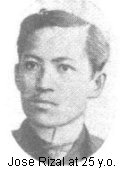 Jose Rizal never became involved in the organization and activities of the Katipunan; but the Katipuneros still looked up to him as a leader. In fact, Rizal’s name was used as a password among the society’s highest-ranking members, who were called bayani.
Jose Rizal never became involved in the organization and activities of the Katipunan; but the Katipuneros still looked up to him as a leader. In fact, Rizal’s name was used as a password among the society’s highest-ranking members, who were called bayani.
Andres Bonifacio had already known Rizal during his La Liga Filipina days, although Rizal did not know Bonifacio personally Nevertheless, Bonifacio so respected Rizal’s intelligence and talent that in June 1896, he sent Dr. Pio Valenzuela to Dapitan to seek Rizal’s advice on the planned revolution.
Rizal told Valenzuela that the timing was not right for a revolution. The people were not yet ready and they did not have enough weapons. He suggested that the Katipunan obtain the support of wealthy and influential Filipinos first, in order to gain financial assistance. He also recommended Antonio Luna as commander of its armed forces, since Luna had much knowledge and expertise in military tactics.
Valenzuela returned to Manila on June 26 and relayed Rizal’s advice to Bonifacio, who admitted that it would indeed be fatal for the Filipinos to fight without enough weapons. However, there was no stopping the Revolution. Bonifacio ordered his men to prepare for battle. He directed them to store enough food and other supplies. Battle plans were made with the help of Emilio Jacinto. It was suggested that the revolutionary headquarters be located near the seas or mountains to provide for an easy retreat, if necessary.
The Katipunan is Discovered
Rumors about a secret revolutionary society had long been in circulation, although no solid evidence could be found to support them. The big break as far as the Spanish authorities was concerned, came on August 19, 1896 when a KKK member, Teodoro Patiño told his sister Honoria about the existence of the Katipunan. Patiño was a worker in the printing press of Diario de Manila. Honoria was then living with nuns in a Mandaluyong orphanage.
The information upset Honoria so much that she told the orphanage’s Mother Superior, Sor Teresa de Jesus, what her brother had revealed. Sor Teresa suggested they seek the advice of Father Mariano Gil, the parish priest of Tondo.
After hearing Patiño’s revelations, Father Mariano Gil-accompanied by several Guardias Civiles immediately searched the premises of Diario de Manila and found evidence of the Katipunan’s existence. The governor general was quickly informed. The printing press was padlocked and hundreds of suspected KKK members were arrested.
THE 10 FACTS
A monument made by Napoleon Abueva depicting the “Camara Secreta”: Emilio Jacinto, Andres Bonifacio, and Pio Valenzuela. Photo Credit: Carinoza
While well-known is the fact that the KKK operated like a shadow government with its legislative and executive functions, its judicial branch is a little more obscure.
According to historians, the Katipunan had a council called the Camara Secreta (Secret Chamber) composed of Andres Bonifacio, Emilio Jacinto, and Dr. Pio Valenzuela. Also called the Camara Negra (Black Chamber) and Camara Reina (Supreme Chamber), this sinister-sounding body doled out punishment to members who betrayed or broke the by-laws of the Katipunan.
Death sentences were usually handed down in the form of a cup with a serpent curled around it. Supposedly, five Katipuneros met their ignominious end inside the dreaded chamber.
Notwithstanding the heated debate of whether it became a de facto government after it operated in the open, the Katipunan actually succeeded in establishing a republic long before Emilio Aguinaldo’s Biak-na-Bato or the Malolos Republic.
Located in Bulacan, the Republic of Real de Kakarong de Sili was established on December 4, 1896, by some 6,000 Katipuneros led by Supreme Chief Canuto Villanueva and General Eusebio “Maestrong Sebio” Roque. Together they constructed a fort in the area and established a working mini-state.
The republic operated like a real government, complete with its own armed forces, police, and other civilian offices. Unfortunately, the republic lasted for only a month. On January 1, 1897, a large Spanish contingent overran the fort and massacred an estimated 1,000 – 3,000 Katipuneros. The most famous survivor of this setback would be none other than Gregorio del Pilar.
3. The Real Meaning Of The Letter K.
The answer, of course, lies in the era before the formation of the Katipunan, when debates were still raging over the creation of a new orthography. Filipino nationalists—Jose Rizal included—at the time favored replacing the letter “C” found in the Spanish-influenced Tagalog alphabet with the letter “K” since it had already been in use since during the period of the pre-colonial Filipinos.
In time, Andres Bonifacio—a member of Rizal’s La Liga Filipina—came to wholeheartedly adopt the letter and its revolutionary undertones. For him and many revolutionaries, the letter would come to symbolize independence and liberty. Long story short, the CCC became KKK instead.
4. The KKK Had Three Supremos.

One common misconception among many Filipinos is that Andres Bonifacio had always been the supreme leader of the Katipunan since its inception. However, Bonifacio was only the third Supremo, having been elected to the position three times, first on January 1895, the second on December 31 of that same year, and the third and last time on August 1896.
The first Supremo was Deodato Arellano—a Katipunan co-founder—who was elected in 1892. However, his ineffectiveness caused Bonifacio to depose him and order another round of elections on February 1893 which resulted in Roman Basa becoming Supremo.
Bonifacio also deposed Basa in 1895 after the latter criticized him over the recruitment process and his handling of the organization’s funds. After Bonifacio, no other man (not even Aguinaldo) ever claimed the title.
5. It Already Had A National Anthem.
Contrary as to what most of us would believe, Julian Felipe’s Lupang Hinirang is not the first national anthem of the country. That honor belongs to Julio Nakpil and his Marangal na Dalit ng Katagalugan which he had originally composed in 1896 after being asked to create a national hymn by Andres Bonifacio.
With Bonifacio’s death, however, Nakpil’s work was overlooked by Emilio Aguinaldo in favor of that of Felipe. Incidentally, both men were province mates. Nakpil later renamed his piece to Salve Patria as a tribute to Jose Rizal. Although the original scores were later lost during World War II, the current version—which Nakpil reconstructed from memory in his old age—is still alive and well today.
6. The Aims Of The Katipunan After The Revolution.
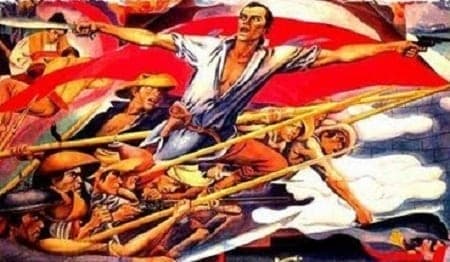
Thanks in part to the political rivalry between Bonifacio and Aguinaldo, we can only speculate what would have happened had the Katipunan remained a united front and succeeded in expelling the Spanish from the archipelago.
Although it is generally held that the Katipunan’s aim was to completely break away from Spain and create a new government, not much is really known what kind of government Bonifacio would’ve wanted to establish aside from it being obviously patriotic and anti-colonial by nature. The issue is a matter of debate for historians up to now, with some inferring from Bonifacio’s writings that he wanted a “communist republic.”
However, other historians have dismissed that view due to a lack of actual evidence. According to them, Bonifacio’s wish to create a government and society which viewed and treated men as equals did not mean he was an outright communist. Rather, Bonifacio’s views came as a natural reaction to centuries of Spanish oppression.
7. It Lost Much-Needed Support After The Rizal Meeting.
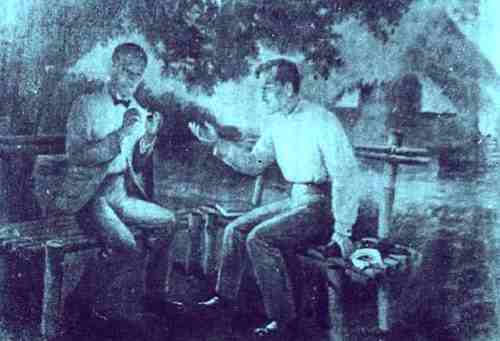
We all already know how the Katipunan respected Rizal’s advice so much they sent Pio Valenzuela to Dapitan in order to secure his blessing for an armed revolution. However, instead of saying yes, Rizal denounced their plan as premature and instead urged them to gather more material support from the wealthy Filipinos if they wanted to really win.
Bonifacio—disappointed by Rizal’s hesitation to support the Revolution—was said to have called him a coward and ordered Valenzuela to keep silent on the matter lest it affects the morale of their men. However, Valenzuela was reportedly compelled to reveal the details of his meeting with Rizal by the top leaders of the Katipunan.
Upon hearing the news of Rizal’s refusal to endorse an armed uprising, many of the wealthier supporters of the Katipunan withdrew their pledges of support to the movement. Not only that, a good number of rank-and-file members lost heart and turned in their membership. Valenzuela’s disclosure of Rizal’s refusal also caused a rift between him and Bonifacio.

The Katipunan, in its bid to secure support for the revolution, also looked to Japan as a source of potential aid.
At the time, Japan had been a shining example of defiance against Western influence and the Katipuneros hoped that the Japanese would also help them fight off the Spanish. In fact, the Katipunan’s Big Three along with Daniel Tirona and interpreter Tagawa “Jose” Moritaro secretly met with the captain of a Japanese warship and the Japanese consul at a bazaar in Manila on May 1896.
During their meeting, the Katipunan handed to the captain their letter to the Japanese emperor asking for the Japanese people’s help to liberate the Philippines. Although the end of the meeting saw the Japanese agreeing to sell the Filipinos much-needed arms and ammunition, the deal never transpired due to a lack of funds and because the revolution broke out prematurely. Also, Jose Dizon, the man tasked to secure the weapons from Japan, was one of those arrested early on.
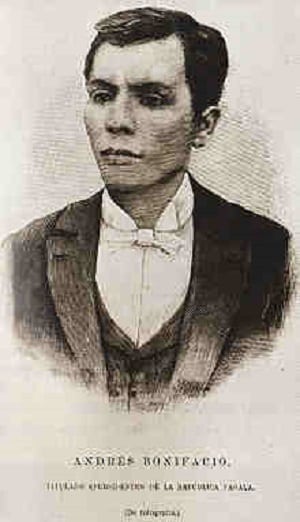
Another misconception that needs to be dispelled is the notion that Bonifacio was a terrible strategist. On the contrary, he actually planned to take Intramuros—then the seat of the Spanish government—in order to take out their leadership in a decapitation strike and while most of their forces were still stationed in Mindanao.
As fate would have it, the plan failed as the rebels from Cavite did not join the battle. According to them, Bonifacio failed to raise the signal for them to march to Intramuros. Many variations of the signal in question have been put forth including fireworks, cannon fire, balloons, and even a blackout in Bagumbayan.
However, many historians have also questioned that theory on the basis of its impracticality. Since Cavite is relatively far off from Manila, the rebels waiting for the signal would have inevitably arrived late for the battle. Also, the Cavite leaders had already earlier expressed their reservations about joining the offensive due to a lack of weapons.
As a result, it’s anybody’s guess as to whether the revolution would have ended early in the Filipinos’ favor had the Caviteños bothered to show up.
10. The Little-Known Revolts In Mindanao.

So much attention has been focused on the revolution in Luzon and in the Visayas that we have forgotten Mindanao had also been turned into a battlefield during that period. Specifically, the “Calaganan Mutiny” and the establishment of the Republic of Zamboanga prove the fight for freedom was a national endeavor.
Spanish forces had to be reinforced with a gunboat before they could finally quell the revolt. Today, many from that region are petitioning to include Mindanao as the ninth ray in the Philippine flag as recognition of the patriotism of the local revolutionaries.

The Republic of Zamboanga, on the other hand, was formally established on May 18, 1899, after the Spaniards surrendered and evacuated the city. It even continued to exist for another four years before the Americans finally dissolved it.
CREDITS
https://filipiknow.net/facts-about-the-katipunan/
https://www.philippine-history.org/katipunan.htm




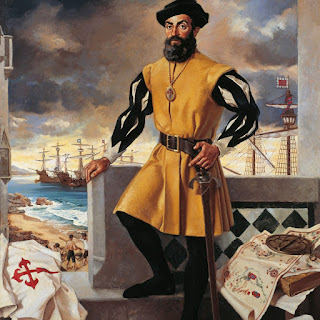
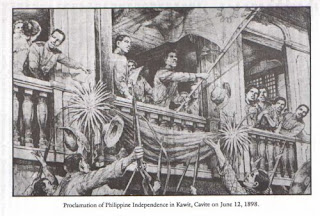
Comments
Post a Comment